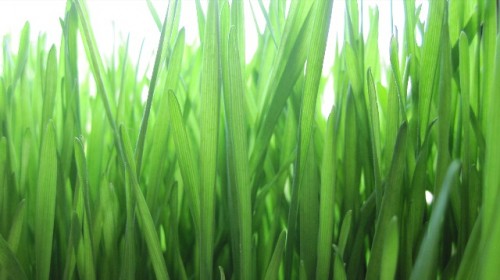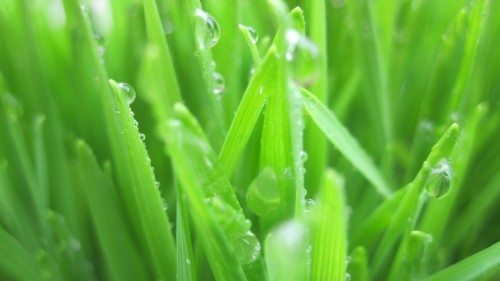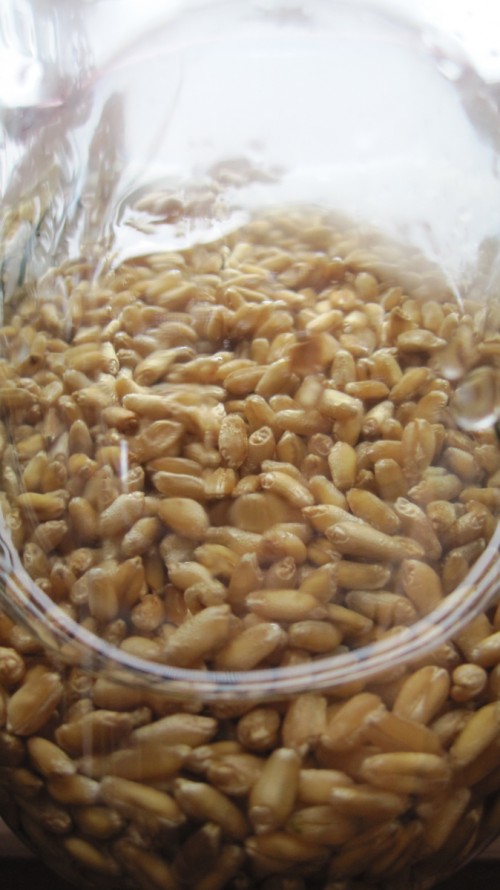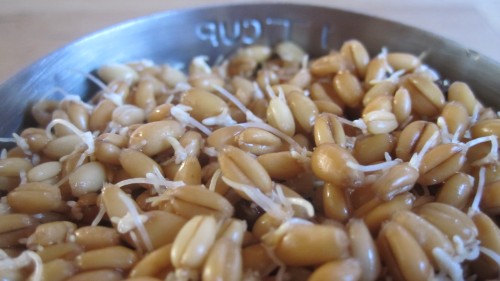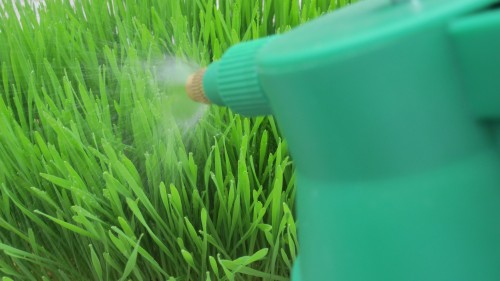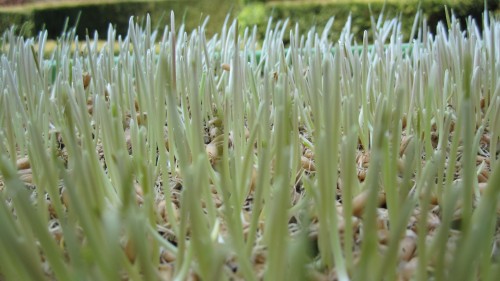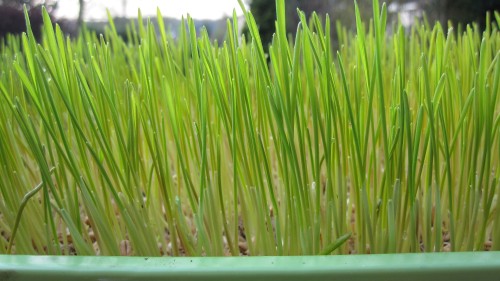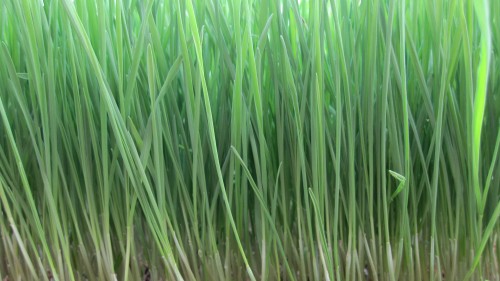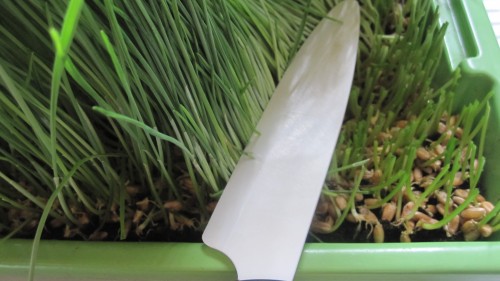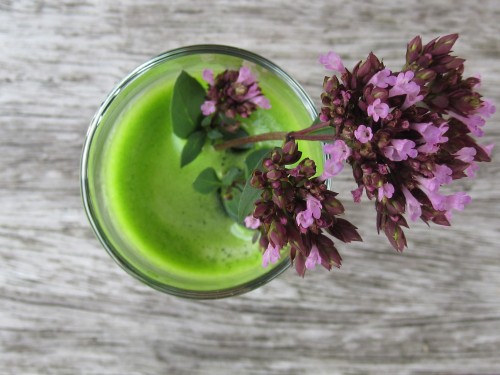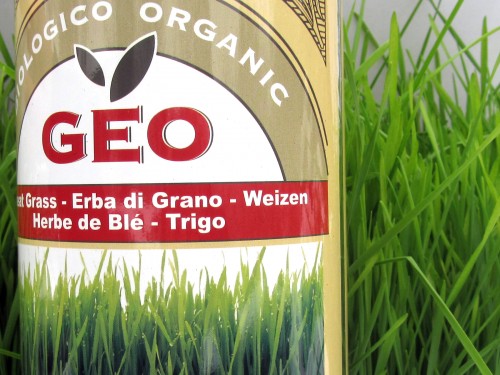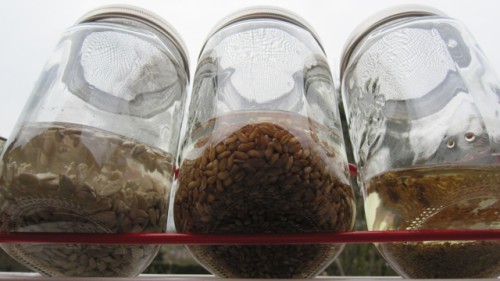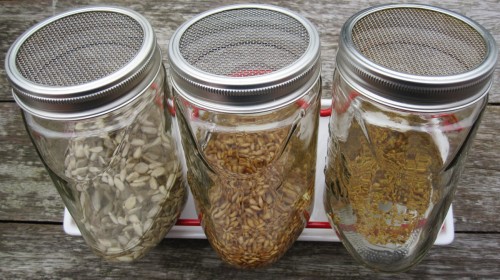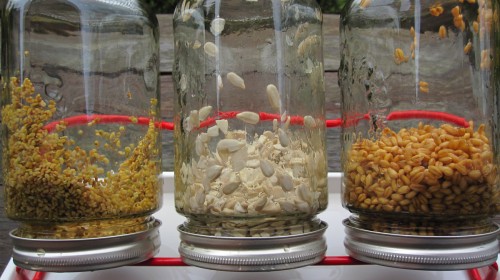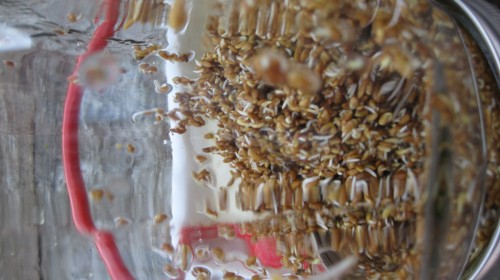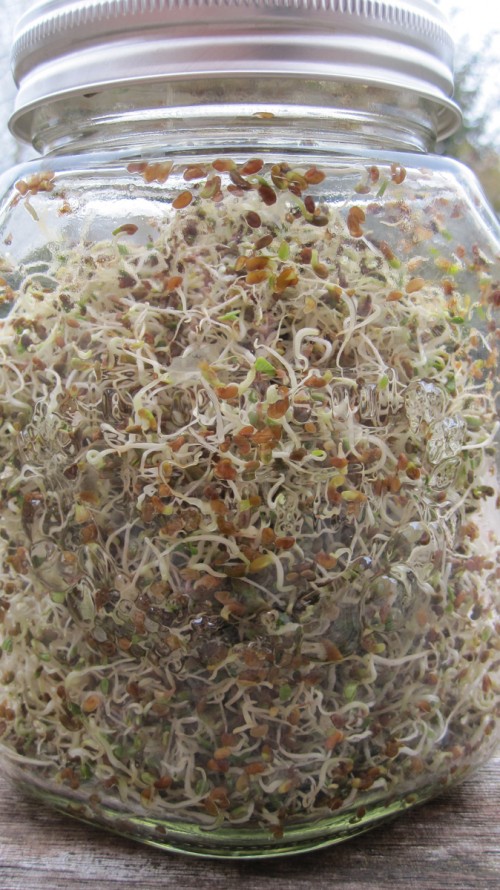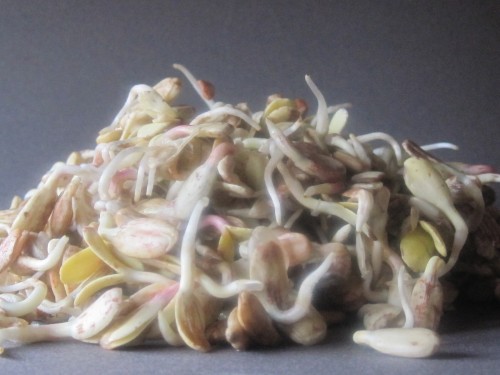Nothing is as simple as growing grass and yet… a lot of people seem to have trouble to get those green blades up and ready to juice. So I thought it might be a good idea to tell you how you can be successful in growing your lovely waving grass in the light at your window. What are the most common problems I hear about?
- Mold
- The berries take a long time to sprout
- The grass is growing irregularly and much too ‘thin’
I must say I had some trouble when I started too. All you need is a little bit of practice and some good tips. When you have a problem, ask yourself what is the cause and you go on from there to find your own solution. But you won’t have to with this little guide…
Let me start from the beginning; sprouting the berries. The first times when I was sewing my wheatgrass, ( and I bet a lot of starters do) I simple threw the seeds in a tray with organic soil, drenched it with water and put it up in the light because when you need to grow something, it needs light no? Nope, it doesn’t! Actually seeds need to be in the dark to be triggered and sprout. They need that signal; “you are under the ground so better start growing so you can see the light!” To grow your grass easier, you have to help it a bit by soaking and sprouting the seeds first.
SOAKING BEFORE SEWING
- Rinse one cup of wheatberries so eventual residue can come off
- Soak them covered up with pure water overnight
- Next morning rinse them until the water is clear
- Put them in a sprouting bag or jar and turn the jar upside down so the water is removed and the seeds can’t get moldy
- Cover up with a dark towel and place them where you don’t forget about them
- Rinse them 2 to 3 times a day
- When they get their little tail, they are ready to sew
SEWING
- Take a plastic tray that is perforated (this is important so the seeds will never be too wet and grow mold)
- Make a layer of organic soil of about 1.96 to 2 inches (the quality of the grass is depending on the quality of the soil!)
- Wet the soil but don’t make it too wet (mold)
- Now you can sew your sprouts; very thick! You may not see any soil anymore or you will only have some poor blades)
- Spray the seeds
- Take a piece of newspaper, make it wet and cover the tray with it (this way the seeds can keep the moist they need)
- Place this tray in a dark, cool place
- Wet the newspaper every day, and spray the soil and seeds very well(this way you won’t get too much water in the tray)
- After two or three days, you will have lovely white grass
- When it is about 2.7 inches or 7 cm high, take the newspaper off, get it out of the dark and bring into the sunlight!
- Now the miracle happens and it is always lovely to see it happen; photosynthesis turns the grass green and makes it grow
- After about 7 days, your grass will be about 6 inches or even more
HARVEST & JUICE
The way you harvest your grass is just as important to receive all the minerals and nutrients. Most minerals are close to the soil.
- Take a sharp knife or scissors and cut off the grass as close as possible to the soil.
- The best way to get all the juice out of grass is juice it with a slow juicer or manual juicer.
- If you don’t have either of them, you can make a diluted version with your blender: put two handfuls of grass in it and pour a little bit of water on top to get it going, blend and strain through a fine sieve or a nut milk bag. This juice is not as strong as the real thing, but it is still better than having none. This is how I did it until I could buy my slow juicer.
TIPS & NOTES
- Don’t blend grass too long in your blender; it may dull the blade
- Mold can be caused by too much water, but also by too few water! When you spray your seeds, you have much more control.
- Choose a very good organic soil to benefit your grass at the fullest! Grass absorbs about 97% of all minerals in the soil; so if you want to have good quality wheat grass, the soil has to be rich in minerals.
- Buy organic seeds who will give you all you need.
- Something I always do to give my soil extra vitamins and enzymes is when I rinse my smoothie glass, I use that water to spray the grass. If it doesn’t help, it sure won’t harm and by the way; I am sure it is the best fertilizer for my grass.
- Don’t let the seeds sprout too long. Don’t wait with sewing until their tail is very long; it will take away their strength and they will grow slow and look poor. A little tail is all you need; the wall is now soft enough and the sprout is ready to grow.
- Wheatgrass can be different depending on the kind of seeds you bought. Some seeds give long, narrow blades as the ones I was growing above. But you will also notice that other pictures have grass with wider blades. I prefer those because they are much juicier.
- If you always want a tray ready, start a system with a routine that keeps you juicing and drinking this healing grass.
- When you have mold, you can’t juice the grass anymore. Throw it upside down on your compost; it brings oxygen in compost.
- You can grow and harvest one tray twice; it will look rougher and not as long anymore but just fine to juice!
- The grass will “eat” all the soil and form a “mat” with the roots. This is first class compost!
- A great organic brand for wheatberries is Geo. The seeds are strong and the grass is …. sweet and green! To purchase feel free to visit my website.
Good luck! If any questions, feel free to email me.
